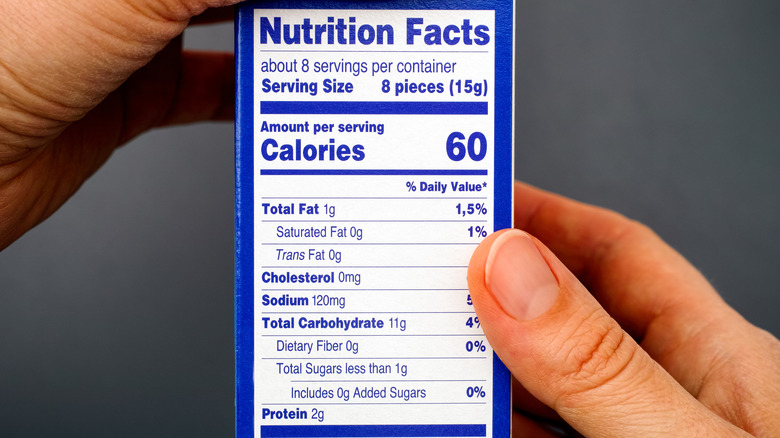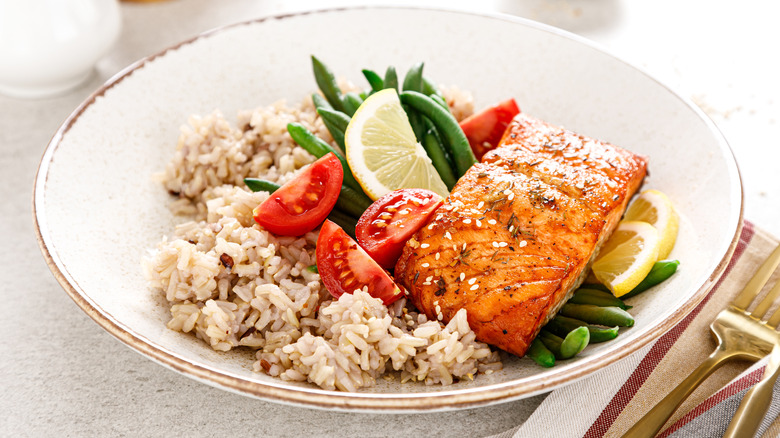How Is A Portion Size Different From A Serving Size?
If you read nutrition labels on packaged food, then you are no doubt familiar with the term "serving size." But what about portion sizes? The terms may get used interchangeably, but they aren't the same thing. If you can't explain the difference between the two, you're not alone. A survey conducted by the International Food Information Council (IFIC) revealed that 48% of those surveyed explain portion size and serving size the same way. Because they are distinct measurements, it's important to know the difference between them.
According to the American Heart Association (AHA), portion size is simply the amount of food you choose to eat. It can be different from the serving size on the package, and it can vary from day to day. The organization explains that a single portion of some foods can include several servings. For this reason, reading labels can be helpful. They can give you a better idea of how much food to put on your plate.
Serving sizes are standard measurements
Serving sizes are standardized measurements of food, and some can help you determine how much to eat. The Academy of Nutrition and Dietetics explains that serving sizes can represent recommended amounts displayed on nutrition labels, but not always. For example, one slice of bread is a serving, but it's easy to see why some people might think two slices make up a single serving. In addition, a piece of cheese the size of a domino is considered one serving of dairy, per the American Heart Association (AHA).
If you're curious about how much you should be eating, the U.S. Department of Agriculture states that the average 2,000-calorie diet should include approximately 2 cups of fruits, 2½ cups of vegetables, 6 ounces of grains, 5½ ounces of protein, and 3 cups of dairy. To help you visualize what those numbers look like, the Academy of Nutrition and Dietetics explains that a 3-ounce portion of chicken, fish, or other kinds of meat is about the size of a deck of cards. A cup of fruit or vegetables is about the size of a baseball, and ½ cup might look more like a tennis ball. When it comes to smaller portions, a teaspoon is about the size of a postage stamp.


